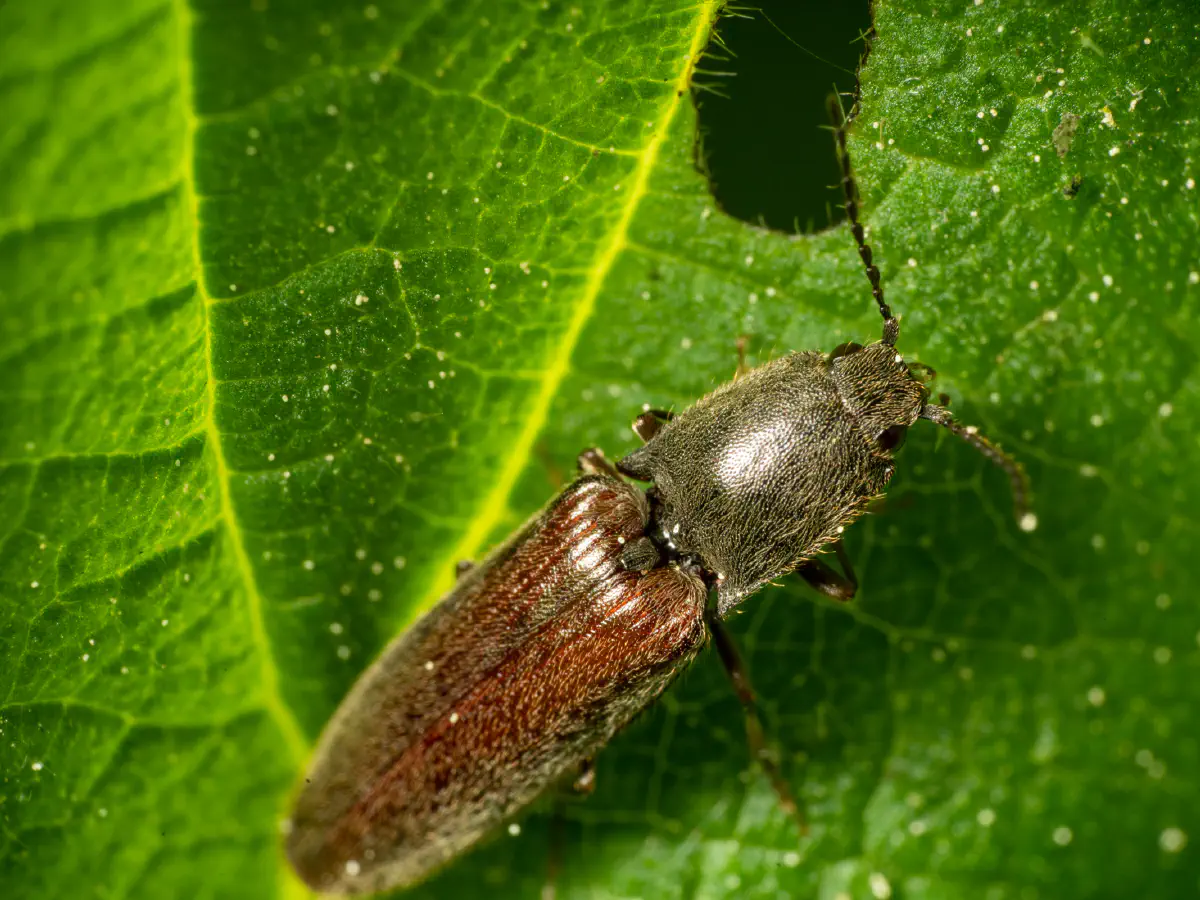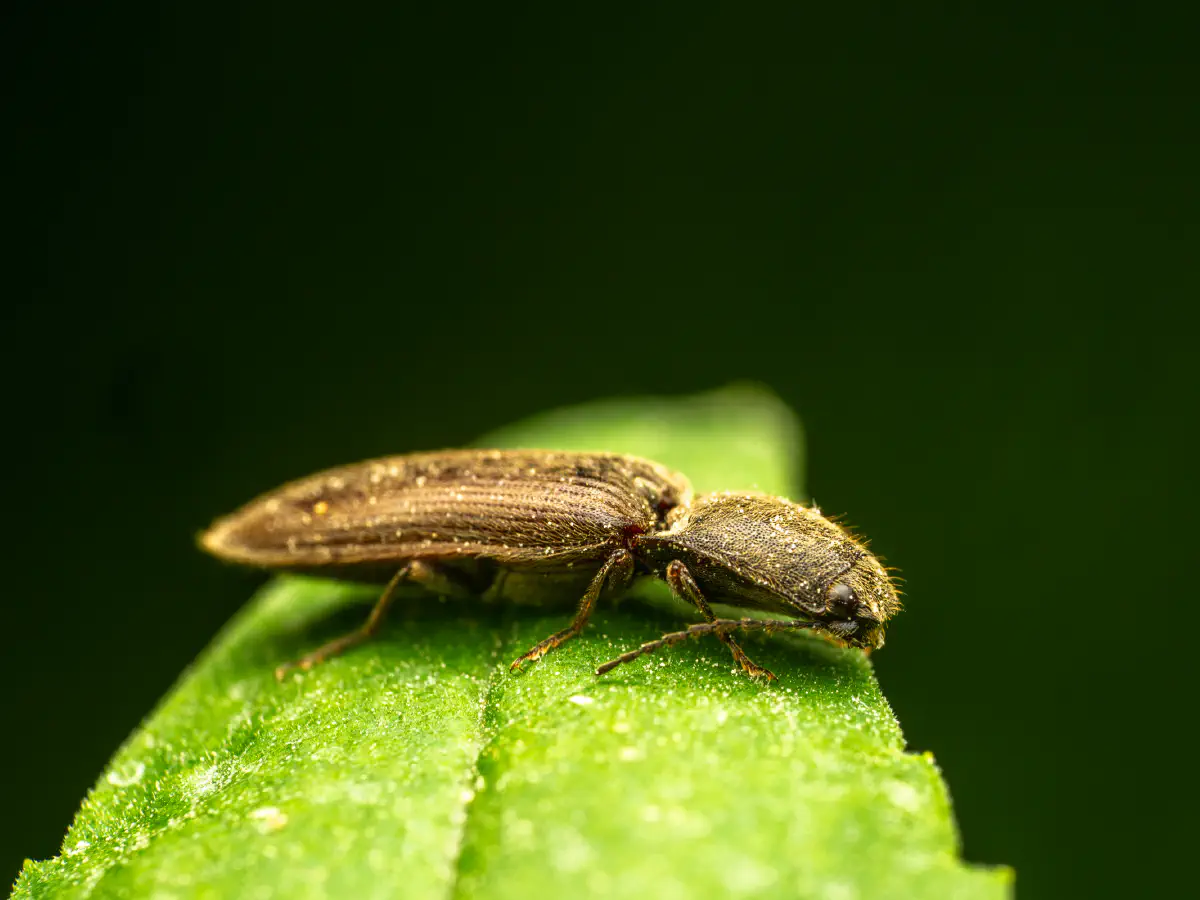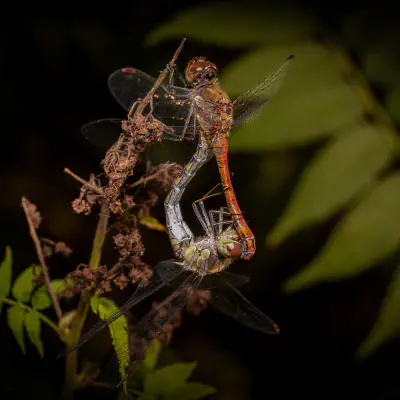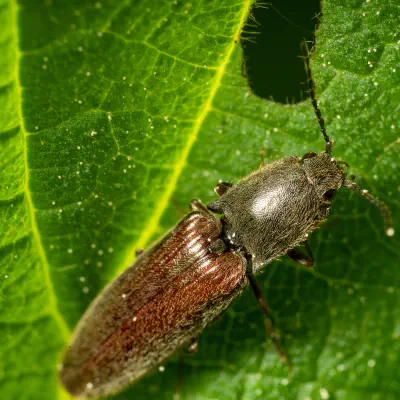The adult is a fairly slender beetle, 10–15 mm long, with straight antennae which are long enough to reach the back of the pronotum (which covers the thorax). The head and thorax are black, the elytra brown and strongly ribbed. The pronotum is clearly dimpled all over. The whole body is covered with greyish-brown hairs. The legs are a paler brown than the elytra. Like other click beetles, the joint between thorax and abdomen forms
a flexible hinge, and there is a central knob at the back of the thorax. The species is sexually dimorphic; males are smaller than females, and the side of the male's pronotum is less wavy than the female's.





